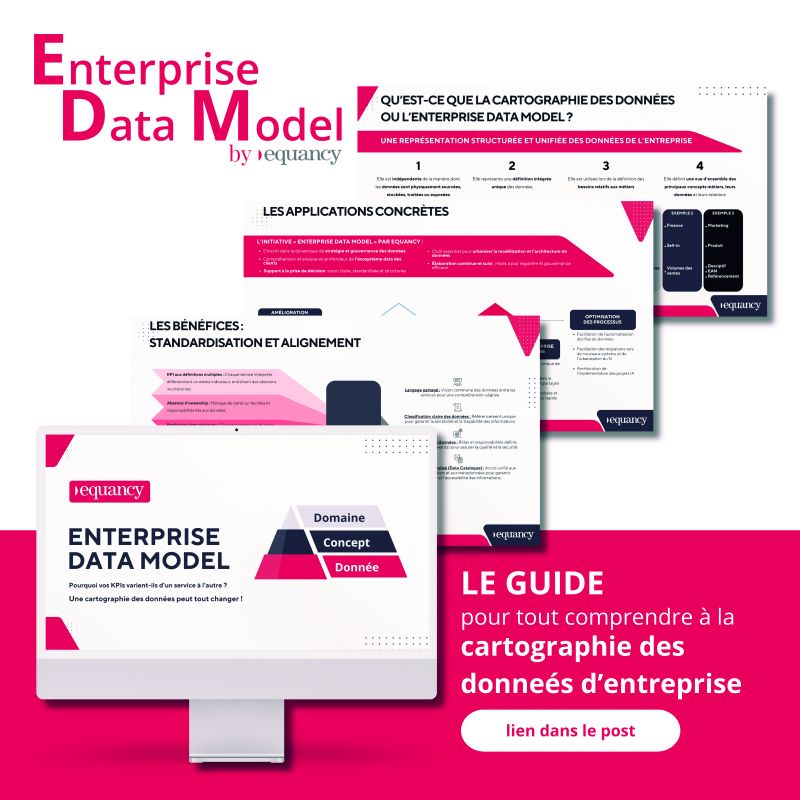This first example provides an overview of your performance. However, it is also possible to create a more concise version, which will nonetheless enable you to identify avenues for analysing any sticking points.
5 steps to a successful CRO strategy
Developing a Conversion Rate Optimisation (CRO) strategy is one of the most crucial aspects of improving your e-commerce business. This approach includes optimising the checkout process, improving product pages and restructuring your site. The ultimate aim is to simplify the search for information, make it easier to enter the purchasing process and encourage customers to complete their purchases.
Establishing a good CRO strategy is essential to improving performance, but where do you start?
I. Choose and prioritise the right performance indicators
Choosing the right key performance indicators is an essential step in defining your CRO strategy. If these indicators are poorly selected or poorly prioritized, they will not allow you to properly monitor and improve your performance.
At Equancy, we recommend that you group these indicators into a decision tree. You should include 5 to 6 main indicators (KPIs) from which "secondary" indicators (PIs) will be derived. You can then complete this decision tree with "support indicators" (KPIs or PIs combined with dimensions).
When selecting KPIs, make sure that they have a direct impact on your performance in terms of conversions or sales generated.
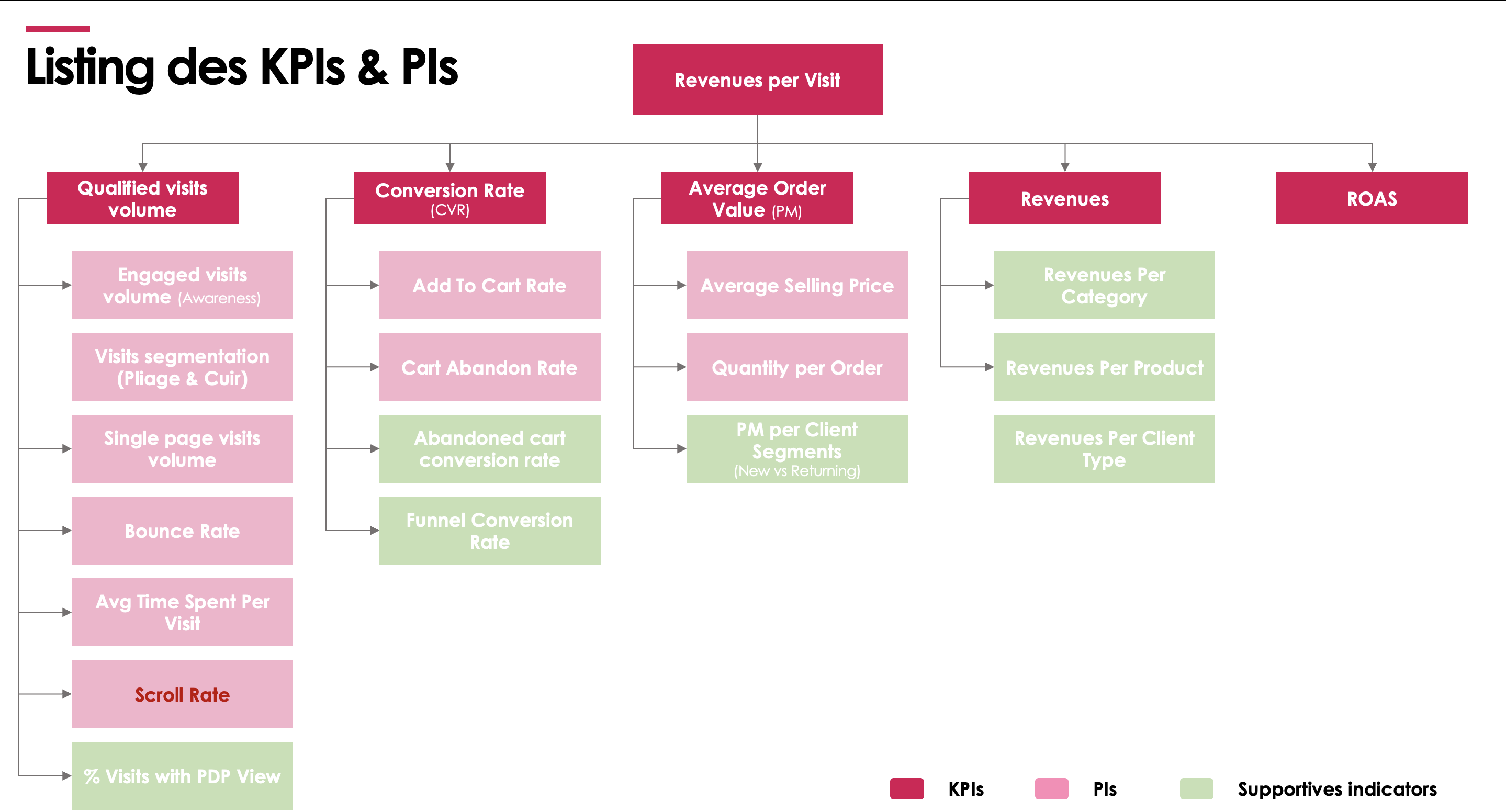
Example of a decision tree and selection of KPIs for a global vision.
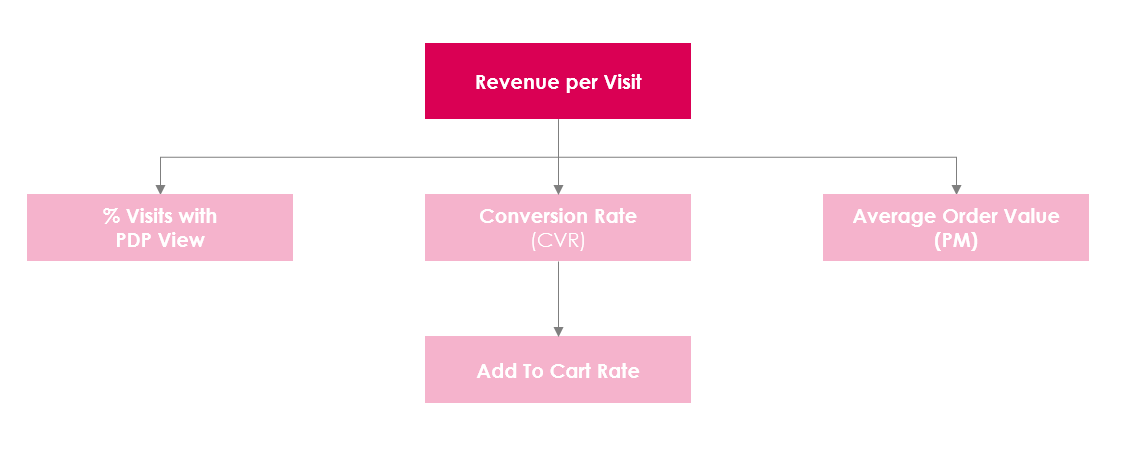
Example of a decision tree and selection of KPIs focusing on the conversion funnel
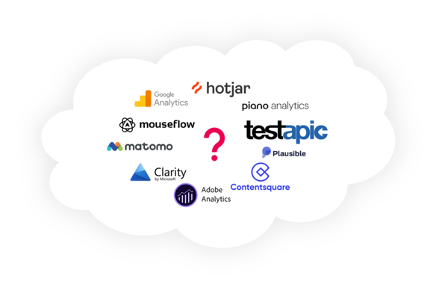
Today, there are a multitude of tools available to optimise your CRO strategy. How can you identify the tools that will be useful to you? At Equancy, we classify them into two main categories: web analysis tools and UX analysis tools.
Web analysis tools such as Google Analytics, Piano Analytics, Adobe Analytics and Matomo allow you to measure your performance using pre-defined indicators. These are quantitative data whose main objective is to optimise the commercial effectiveness of your site or application.
Thanks to the data collected by these web analysis tools, you can identify any break points in your customer journey. UX analysis tools such as ContentSquare, Clarity and Hotjar help you to answer two questions: How do your users navigate your site? Why do your users leave your site without converting? The aim is to understand and improve the user experience across your different user journeys.
To optimise your CRO strategy, you can combine these two categories of tools with tools that provide you with qualitative data (such as Usabilla and Testapic, for example) to obtain direct information about your visitors' experience.
b. Dataviz tools (internal or external solutions)
Once the data has been collected, the next step is to use it and give it meaning in order to identify the key areas for improvement.
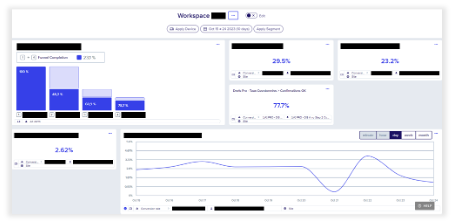
Examples of a ContentSquare CRO dashboard
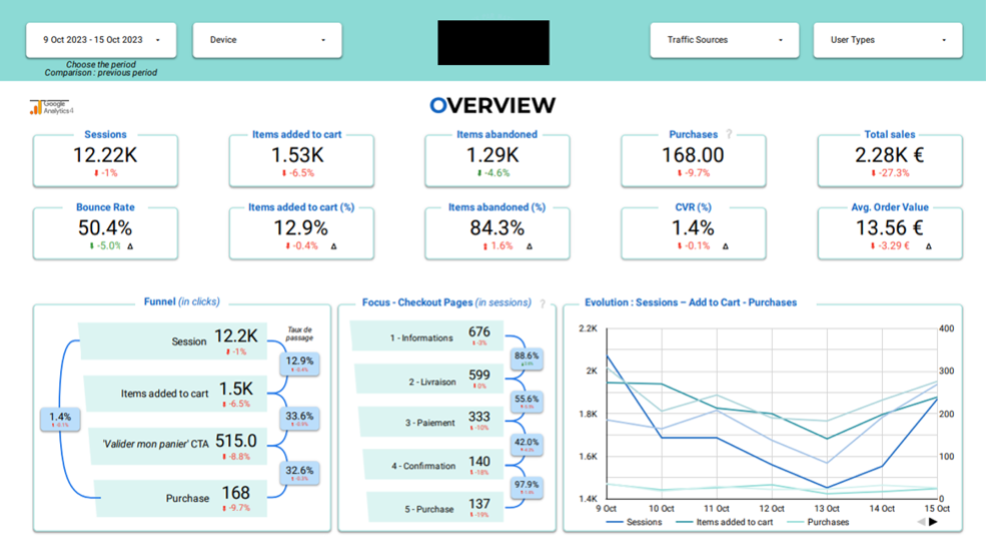
To have an effective CRO strategy, it is essential to bring together end-to-end data, from acquisition (budgets spent per channel with fine time granularity) to conversion (details of sales made).
However, bringing together several data sources in a single dashboard means using an "external" solution. For example, you can use BI tools such as Power BI or Tableau, which offer great flexibility, or Looker Studio (formerly Google Data Studio). These solutions will give you an overview from visitor acquisition through to conversion.
III. Analyse your user journeys
To make proper use of the tools mentioned above, you first need to ensure that you are collecting data in the right way. Checking that your tagging plan is correctly written and implemented is an essential step in your CRO strategy. To take full advantage of your tools, make sure that your monitoring complies with their technical documentation.
The second stage involves analysing your user journeys. It's crucial to carry out in-depth research to identify your audience segments and their specific needs and expectations. Analyse demographics, buying habits and user experience preferences. If conversion is your main objective, it's important to note that this may be different for your visitors. The search for information about your products and services is a crucial element that should not be overlooked. Your CRO strategy must take into account the importance of highlighting this content in order to facilitate entry into your conversion tunnel at a later stage. This is where your UX analytics tools come in. They will help you to understand the behaviour of your users and the performance of your pathways.
IV. Identify areas for improvement
In order to identify ways of optimising your pathways, it is crucial to understand your data. To do this, you can of course monitor changes in your indicators over time, but that's not all! General market data is also an important element not to be overlooked:
Compare your indicators with sector averages.
Regularly carry out benchmarks in your sector and beyond to identify good practice that could be implemented on your routes.
In particular, you can contact the support teams of the analytical tools you use, who will generally be able to provide you with the average performance for your sector. For example, ContentSquare regularly publishes reports offering a general or sector-specific overview.
V. Optimise your pathways on an ongoing basis
Once you have identified your areas for improvement, set up a test roadmap, classifying optimisations according to the effort required and the estimated impact. Carrying out user tests or setting up NPS questionnaires will enable you to identify any friction points that may not have been detected via your data analyses.
Once these friction points have been identified, it is worth testing new versions of your user paths using A/B tests. These A/B tests will enable you to distribute these new versions to specific audiences for a limited period of time. Once your different versions have generated enough traffic, it's time to analyse them. Identify the versions that add value and that can be deployed to 100% of your traffic. If your tests don't produce the expected results, don't hesitate to iterate to find the right formula.
By following these five steps, you'll be able to deploy an effective CRO strategy to optimise your conversions across your various pathways over the long term.
Don't forget to carry out user tests to identify any points of friction and adjust the journey accordingly in order to perfect your CRO strategy. By putting the user at the centre of the design, you can optimise the user journey on your site or application.
Read our other articles on Analytics, Customer Journey and CRO strategies:
- How Volkswagen increased its conversion rate by 10 points thanks to a personalisation strategy
- 38% of websites collect data without consent
- 7 key stages in the Tracking App with GA4
- The end of third-party cookies postponed yet again: 2 actions to take now
- Pierre & Vacances - Funnel - Equancy - Mastering the customer journey: Insights, trends and best practice
Bertrand de La Selle
Digital Acceleration Associate
